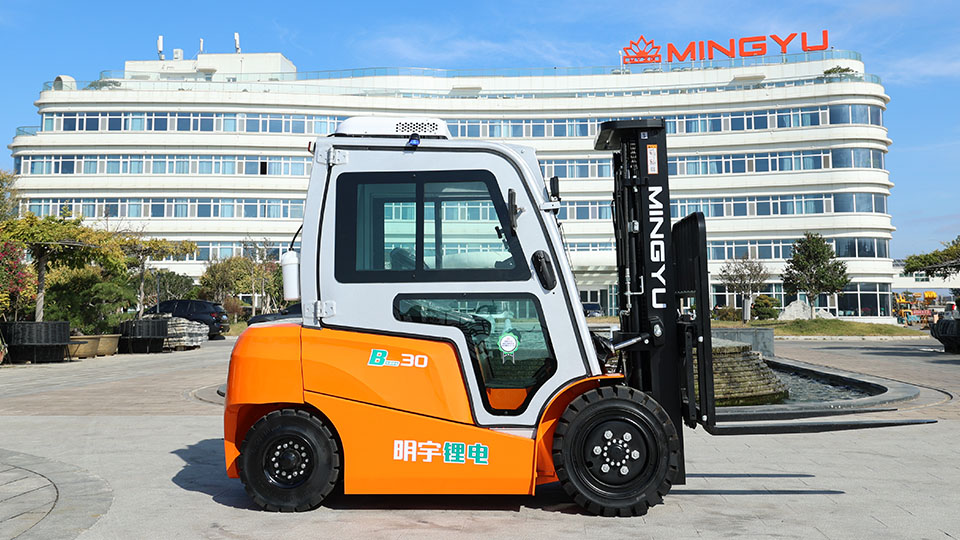
I. Introduction
Forklift certification is an essential requirement for anyone operating these powerful machines in a workplace setting. Forklifts, while incredibly useful, pose significant safety risks if not operated correctly. Obtaining proper certification ensures operators are knowledgeable and skilled, minimizing accidents and promoting a safe work environment. This article provides a comprehensive guide on how to get forklift certified, covering OSHA requirements, training programs, the certification process, maintenance, and the overall benefits of certification.
II. Understanding OSHA Requirements
OSHA Standards and Regulations:
The Occupational Safety and Health Administration (OSHA) sets the standards for forklift safety in the United States.
Specific regulations, such as 29 CFR 1910.178, outline the requirements for forklift operator training and certification.
Employers are legally responsible for ensuring their forklift operators are properly trained and certified.
Types of Forklift Certifications:
Forklift certifications are categorized based on the type of forklift, including electric, propane, and diesel.
Different forklift models require specific training due to variations in controls and operating characteristics.
Obtaining certification for the specific type of forklift used in the workplace is crucial for compliance and safety.
III. Finding a Forklift Training Program
Identifying Qualified Training Providers:
Training options include online courses, in-person training at community colleges, vocational schools, and forklift dealerships.
Private training companies specializing in material handling offer comprehensive programs.
Choosing a reputable provider is essential for quality training and valid certification.

Evaluating Training Program Quality:
Check instructor qualifications and experience in forklift operation and safety.
Ensure the curriculum covers OSHA regulations and practical operating skills.
Look for programs that offer hands-on training with actual forklifts.
Read reviews and testimonials to gauge the program's effectiveness.
IV. The Forklift Certification Training Process
Classroom Instruction:
Classroom sessions cover forklift safety principles, components, controls, load capacity, and stability.
OSHA regulations and safety guidelines are thoroughly reviewed.
Theoretical knowledge is essential for understanding safe operating procedures.
Practical Hands-On Training:
Hands-on training involves operating forklifts in a controlled environment.
Participants learn to perform pre-shift inspections, maneuver through obstacle courses, and lift and stack loads safely.
Practical skills are developed under the supervision of experienced instructors.
Written and Practical Examinations:
A written exam tests knowledge of safety regulations and operating procedures.
A practical exam demonstrates proficiency in operating forklifts safely and efficiently.
Retesting procedures are available for those who do not pass the initial exams.

V. Maintaining Forklift Certification
Renewal Requirements:
OSHA requires recertification every three years to ensure operators maintain their skills and knowledge.
Continuing education and refresher courses are available to prepare for recertification.
Employers are responsible for ensuring their operators’ certifications are up-to-date.
Employer-Specific Training:
Employers provide site-specific training to address unique hazards and operating procedures.
Operators become familiar with the employer’s equipment and workplace layout.
Training and certification records are meticulously documented.
Handling Revocation or Suspension:
Certification can be revoked due to safety violations or accidents.
Regaining certification may require additional training and retesting.
Maintaining a clean safety record is crucial for avoiding revocation.
VI. Benefits of Forklift Certification
Enhanced Job Opportunities:
Certification increases employability in material handling, logistics, and warehousing.
Certified operators often earn higher wages due to their specialized skills.
Certification opens doors to career advancement opportunities.
Improved Safety and Reduced Accidents:
Proper training reduces the risk of workplace injuries and property damage.
Certified operators are knowledgeable about hazard awareness and safe operating procedures.
Compliance with safety regulations minimizes potential legal and financial liabilities.
Increased Productivity and Efficiency:
Trained operators perform tasks efficiently and safely, reducing downtime.
Proper training minimizes equipment damage and maintenance costs.
Skilled operators contribute to a more productive and organized workplace.
VII. Costs and Time Considerations
Training Program Costs:
Tuition fees vary depending on the provider and program length.
Online courses may be more affordable than in-person training.
Additional costs may include materials and retesting fees.
Time Commitment:
Training programs can range from one-day to multi-day courses.
Classroom instruction and practical training require dedicated time.
Scheduling flexibility is essential for working professionals.
VIII. Choosing the Right Forklift Certification Program
Accreditation and Recognition:
Ensure the program is recognized by OSHA and meets industry standards.
Check for certifications and endorsements from reputable organizations.
Verify the provider's reputation and track record.
Program Flexibility and Accessibility:
Look for programs that offer flexible scheduling and online options.
Ensure accessibility for individuals with disabilities or language barriers.
Consider the location and travel requirements for in-person training.
IX. Common Misconceptions and Myths
Online Certification is Sufficient:
OSHA requires both classroom instruction and hands-on training, making online-only certification invalid.
Practical skills are essential for safe forklift operation.
Certification is the Same as Licensing:
Forklift certification is provided by employers or training providers, while licensing is issued by government agencies.
Certification demonstrates competency, while licensing grants permission to operate.
Theoretical Knowledge is Enough:
Practical training is crucial for developing the skills needed to operate forklifts safely and efficiently.
Hands-on experience reinforces theoretical knowledge and builds confidence.
X. Conclusion
Obtaining forklift certification is a critical step for anyone operating these machines in a workplace environment. By understanding OSHA requirements, choosing a reputable training program, and completing the certification process, operators can ensure their safety and the safety of those around them. Maintaining certification through recertification and employer-specific training is essential for continued compliance and competency. Prioritizing safety and investing in proper training not only enhances job opportunities but also contributes to a more productive and secure workplace.
Name: selena
Mobile:+86-13176910558
Tel:+86-0535-2090977
Whatsapp:8613181602336
Email:vip@mingyuforklift.com
Add:Xiaqiu Town, Laizhou, Yantai City, Shandong Province, China